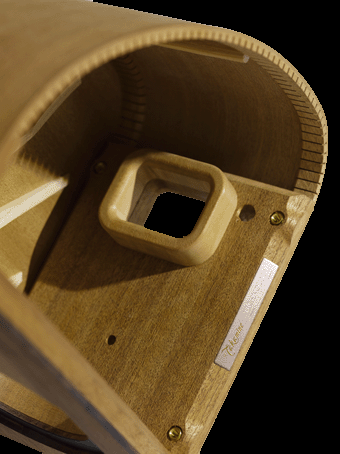|
|
|
|
 |
Like the body of a musical instrument:
The cabinet is made and finished employing similar techniques to those used for a premium-grade musical instrument. The result is a speaker very different from anything else. Thick and heavy cabinets have been replaced by thin, light tonewoods that are cannily braced, shaped and floated, relying on decades of experience gained in building the world's finest musical instruments. Careful internal shaping and profiling of the HB-1's cabinet has allowed conventional acoustic damping to be nearly completely eliminated.
As one example of how unique the HB-1 is, the side walls of a conventional high-end speaker's cabinet can be easily a couple of inches, but the HB-1 has sidewalls that are a mere 2.6mm thick (these are actually subtlely curved outward and gently tensioned). However, it is extremely difficult to make such a speaker and not have the entire cabinet resonating chaotically to the damage of the music.
It is only because of Takamine's decades of experience with tonewoods, tensioning, bracing and flotation techniques, glues, lacquers, and all of the other factors that go into making a top-grade musical instrument that the HB-1 was possible.
The drivers and crossover network:
The specially adopted, and partly customized, drivers go through many tests in a thorough selection process done both by ear and by the application of industry standard computerized measurement equipment. A considerable portion of the drivers are discarded in this process.
The crossover network, often seen as "the heart" of a loudspeaker, was developed based on a combination of veteran loudspeaker-design know-how, and expert operation of the latest hardware and software tools available. The electronic components used were chosen from the finest available film-capacitors, air-core coils, and wire-wound resistors based on numerous listening tests by an extremely experienced group of listeners.
|
Kiso Acoustic Co., Ltd.
|



